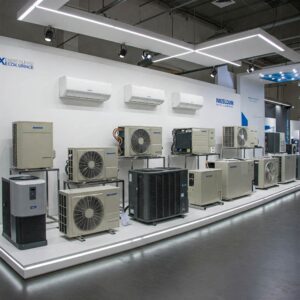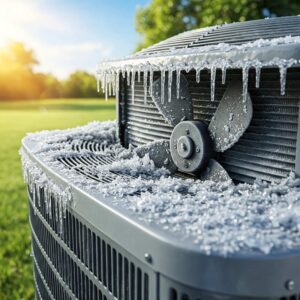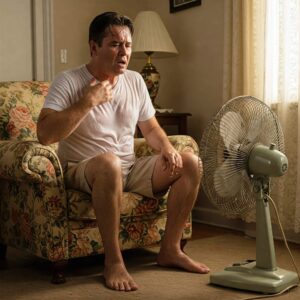If your furnace is blowing cold air, you’re going to notice pretty soon in Calgary. Especially if, like many furnace problems, a dreaded blast of cold air from the vents happens in the dead of winter — when you rely on heating the most.
The problem might be alarming but cold air rather than warm air blowing could be simply due to a clogged filter that needs cleaning. Alternatively, it could be a more complex problem with a damaged component that needs replacing or professional repairs.
And if your furnace is blowing only cold air, it could be a different issue than blowing cold air and then hot.
Either way, there are a few furnace troubleshooting steps you can take to identify the reason and rectify the situation before you need to call a professional HVAC repair service.
Here’s what we cover:
Why is my furnace blowing cold air?

If your furnace is blowing cold air, it’s likely to be because of a problem with the thermostat, air filter, ductwork. flame detector or pilot light. These are the most common reasons but it could also be due to an inadequate gas supply. electrical issue or clogged condensate lines.
Your furnace troubleshooting steps will depend on the precise nature of the problem: if your furnace is blowing warm air and then cold air, it may be due to an overheating furnace or pilot light/flame sensor issue. If, on the other hand, your furnace is only blowing cold air, the cause is more likely to be the thermostat or ductwork.
Furnace troubleshooting: Understanding how a furnace works
Over four out of five homes in Alberta use a forced air furnace for heating. Yet, considering the significant cost of a new furnace, surprisingly few homeowners know how these appliances work.
A licensed professional should attend to any serious furnace problems and carry out regular furnace maintenance but a few simple troubleshooting steps can prevent the problem of cold air blowing from your furnace.
Understanding how your furnace/HVAC system heats your home is basic to being able to troubleshoot problems:
- In a properly functioning, well-maintained furnace, when the indoor temperature drops below that set on the thermostat, the control board receives a signal to begin the heating cycle.
- The combustion process, which creates heat in your furnace, starts when the ignition switch is turned on. The gas valve opens and this activates the draft fan.
- The combustion process begins to warm up the furnace’s heat exchanger, with the flue gases released outside by the heat exchanger and exhaust pipe.
- The cool, room-temperature air is directed past the heat exchanger by the blower fan and, in doing so, it absorbs heat. This is then forced through the air ducts around your home, heating it to the desired temperature specified on the thermostat.
It’s easy to see from this process how many moving parts are involved in the heat generation process in a furnace. Each of these parts and processes can run into problems and result in a furnace blowing cold air.
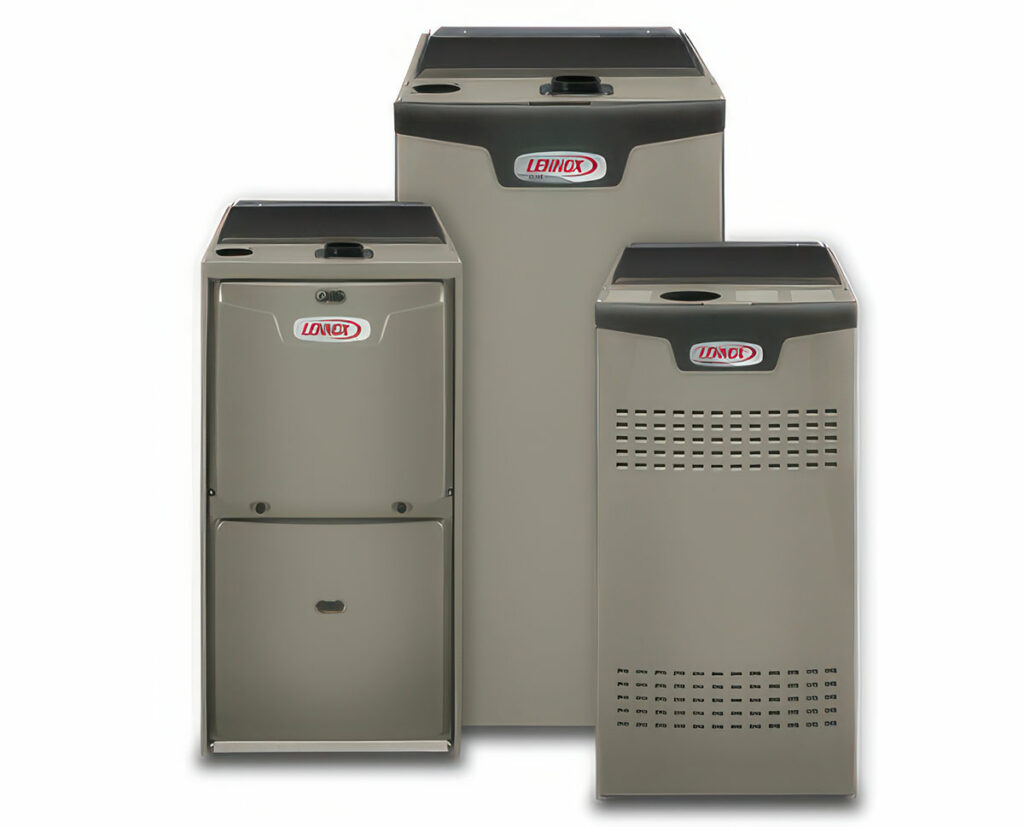
Different cold air problems with a furnace
Cold air instead of warm air blowing from a furnace is undoubtedly a problem — but there are different scenarios and the recommended troubleshooting steps vary according to the precise nature of the issue.
Some minor issues can be “fixed” with basic home maintenance but others require the experience of an HVAC service technician. If in doubt, always opt for the latter.
1. Furnace only blowing cold air
If your furnace is continuously blowing cold air (no warm air at all), the burners may not be working (no heat is being generated at all) or the warm air that is created is escaping.
The troubleshooting steps to take are as follows:
Check the thermostat temperature settings
If the strength of airflow is relatively normal but it’s cold instead of warm, the first step is so simple you may forget to do it: check that the thermostat setting is correctly set to warm up your home.
The thermostat sends instructions to the furnace for when to fire up the burners based on the room temperature. The settings can be knocked accidentally, which can change the temperature “instructions” that are sent to your furnace.
When the seasons change (or in unseasonably hot or cold weather), homeowners may also forget to adjust the thermostat to the required settings.
Obviously, if the thermostat is set to COOL, it needs to be switched to HEAT and you should check that the desired temperature is set.
Of course, a malfunctioning thermostat, one with low batteries or one that was incorrectly installed won’t send the right instructions to your furnace. This can cause cold air to circulate through your home and, if replacing the batteries doesn’t work, you may need an HVAC professional to replace/upgrade your thermostat.

Check the ductwork
If the strength of the airflow is relatively weak AND you’re getting cold instead of warm, you may have a problem with a leak in your home’s ductwork.
The ductwork is responsible for sending warm air into your home’s spaces. Warm air can escape from old or improperly installed ductwork via holes and other damage. Also, unconditioned air from the attic can find its way into your home through holes in the ducting.
This can reduce the temperature of the air circulating in your home and may also affect the force with which air moves through your home. If you notice cold, weak airflow, the leak may be serious and you’ll need an HVAC professional to inspect the ductwork with specialist equipment. Leaky ducts will need to be sealed or replaced.
Check the gas supply
Less commonly, a furnace may blow only cold air because of a gas supply problem. It’s no surprise that a gas furnace needs a steady supply of gas for the burners to generate heat but this supply can become blocked or interrupted.
Your furnace is designed to deactivate if it’s not receiving enough gas to function properly but the blower may still run — resulting in cold air being distributed around the home before the furnace shuts off completely.
If you suspect a gas supply issue, check other gas appliances in your home, such as the range or gas oven. You can also check if the gas valve is turned on by turning the valve in a parallel position with the gas pipe. If the furnace continues to produce cold air after the gas valve adjustment, seek professional help from an HVAC technician.
Most homes in Alberta have a reliable natural gas supply with natural gas making up 77 percent of household energy use here. However, for homes that use propane instead of natural gas to fuel a furnace, the supply needs to be refilled regularly to keep your home warm.
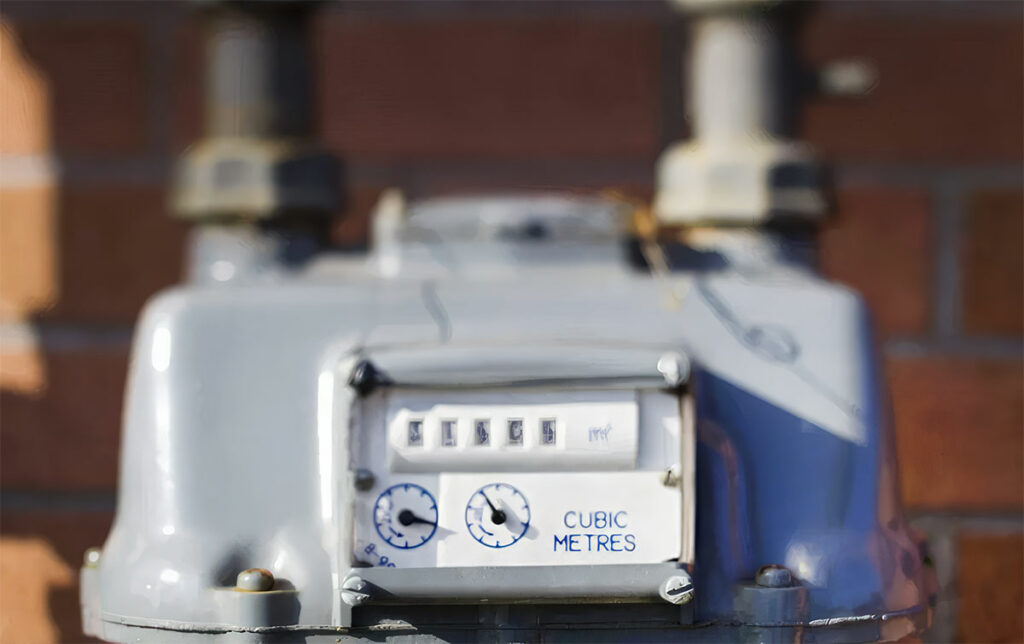
Check the circuit control board
A furnace’s circuit control board receives information from the thermostat and sends instructions to the various components (including the furnace blower and furnace burner) to kickstart the heating process.
When the “brains” of the system malfunction, the blower fan may work without the burners igniting.
So, if all is well with the thermostat, the ductwork is sound and the gas supply is uninterrupted but your furnace still blows cold air around your home, the circuit control board needs checking by an HVAC professional or licensed electrician.
2. Furnace blowing cold air and won’t shut off
If your furnace is continuously blowing cold air and won’t shut off, take the following troubleshooting steps in addition to the above:
Check the thermostat fan setting
The fan setting on your thermostat should not be in the ON position or the fan will blow continuously. Adjust the setting to AUTO to allow the furnace to control when the blower comes on (also saving on energy usage).
A surefire way to stop continuous cold air from blowing is to turn the system off at the power switch mounted on the unit. It could also be turned off at the breaker — until you get an HVAC professional to check the system.
Get the limit switch checked
Another reason for cold air to continuously blow from a furnace is a faulty limit switch.
The purpose of this switch is to turn the fan motor on and off during the normal heating cycle and to prevent the furnace from overheating by shutting down the ignition process if it receives certain warning signals.
If the high limit switch is dead, worn or becomes too dirty, the furnace control board will think the furnace has overheated and turn on the fan to clear the heat. The switch may need to be replaced and an HVAC technician should attend to this as a priority.
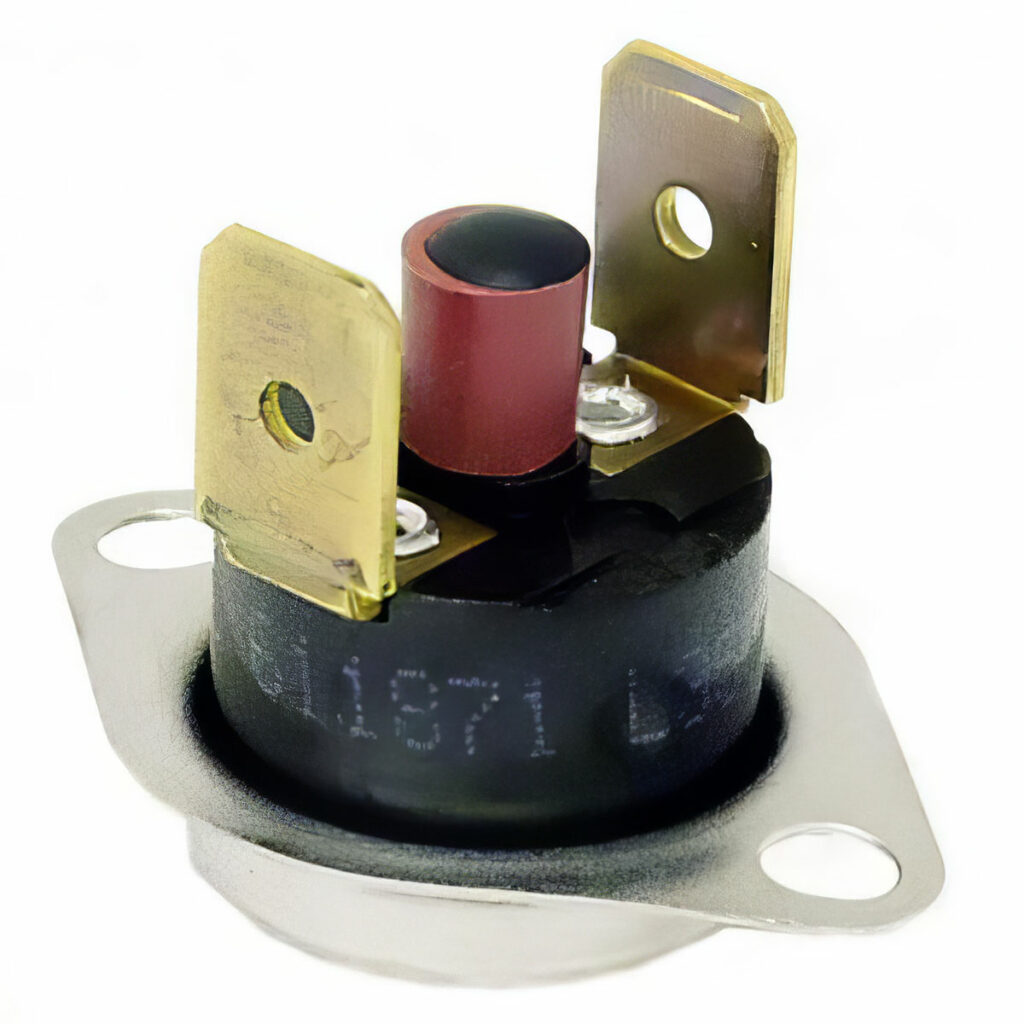
Check the air filters
The high limit switch failure could be due to a fault with the switch itself or a problem with clogged air filters, which lead to an overheated system.
Cleaning or replacing the filter regularly can prevent many airflow problems in your furnace so it should be a regular troubleshooting step for almost any furnace problem where cool air is blowing rather than warm (see more in the next section).
3. Furnace blows hot air and then cold
If your furnace is blowing hot air then cold, some of the likely causes to troubleshoot may be familiar to you from the above steps — but there are also other places to look:
Check the thermostat fan setting
The thermostat fan setting should be set to AUTO rather than ON. Efficient furnaces only produce warm air in short bursts during the heating cycle — not all the time. If the AUTO setting is used for the fan, it will only blow when the air is heated.
If simply switching the fan setting from ON to AUTO doesn’t correct the problem, move to the next step.
Check for an overheating furnace
If everything is OK with your thermostat but your furnace is blowing cold air then hot, the problem is likely that your furnace is overheating.

An inbuilt safety feature of a furnace (the limit switch) will kick in, shut down the heat exchanger and limit the temperatures emitted by the system. Eventually, it will shut down the heating cycle. Before then, however, the blower fan will still run, temporarily blowing cold air before the appliance eventually shuts off completely.
An overheating furnace is normally due to a lack of airflow, meaning that inadequate levels of cool air blow over the heat exchanger, causing its temperature to rise excessively and triggering the safety switch.
Inadequate airflow in the furnace is usually due to one (or more) of the following reasons:
- Clogged air filters: if an air filter becomes clogged with dust, it cannot do its job of filtering out contaminants and also restricts airflow to the furnace. It can also be a fire hazard. Filters should be checked monthly and replaced or cleaned if dirty (ideally, every couple of months).
- Other dirty components: a dirty air filter is a typical sign of neglect, meaning that other parts of the furnace may also be dirty and restrict airflow to the heat exchanger. This could include ductwork, fan blades, the blower motor, etc., all of which can further reduce airflow or lead to overworked components and eventual mechanical failure.
- Closed or blocked vents: ensure that the vents and registers in all rooms of your home are open (even in rooms you don’t use). Furniture, heavy curtains, rugs or other items can block vents and restrict airflow.
- Failing mechanical components: older furnaces (over 15 years) are susceptible to wear and tear damaging parts and causing airflow to be restricted. These will need to be repaired/replaced or, in the worst-case scenario, a new furnace installation may be necessary.
Other than checking and cleaning air filters and unblocking vents, the best way to resolve an overheating furnace that starts blowing cold air is to get a full maintenance checkup.
Your furnace will be thoroughly cleaned and normal airflow should be restored. Regular furnace maintenance should be part of every homeowner’s routine.
Check for pilot light malfunction
Most modern furnaces (manufactured within the last 15-20 years) have electric ignition systems but older furnaces used pilot lights to ignite the burners.

If your furnace is a traditional model and starts blowing cold air after heating the home, it may be due to an extinguished pilot light causing the burners to go out. A strong draft or a dirty gas valve can cause this, especially after your heating appliance has been idle for long periods during the summer.
An extinguished pilot light can be a potentially dangerous situation if gas continues to flow from the gas valve. This can cause a buildup of gas that explodes when the pilot light is rekindled. Carefully follow the instructions in the manual before attempting to re-light the pilot.
Problems with pilot lights may need professional attention and are usually a good sign that you should consider upgrading your furnace to a more modern (and higher-efficiency) heating system for your home.
Check for a dirty flame sensor
Modern furnaces without a pilot light rely on electric ignition and a flame sensor to ensure proper heat generation.
So, if a modern furnace seems to be working normally, blowing hot air, and then this changes to cold air, the problem could be due to the flame sensor. This is a thin metallic rod located inside the burner assembly of the furnace, which is typically towards its base.
One common problem with a faulty flame sensor is that it gets dirty from household grime. If this happens, the cold and warm cycles occur relatively quickly. The blower continues to run even when no heat is being generated, meaning that cold air circulates in the home.
Cleaning the flame sensor should be part of a routine furnace maintenance call. If that doesn’t work, the flame sensor may need replacing.
Check the condensate lines
If a high-efficiency furnace starts up, blows warm air and then cold air starts circulating in your home — and none of the above furnace troubleshooting steps solve the problem — it’s time to check the condensate lines.
These narrow pipes are drain lines that aid with the removal of moisture from the system, channeling all residual water from the furnace’s heat exchanger to outdoors where it can evaporate. If a blockage affects these lines, the excess water may cause the burners to deactivate.
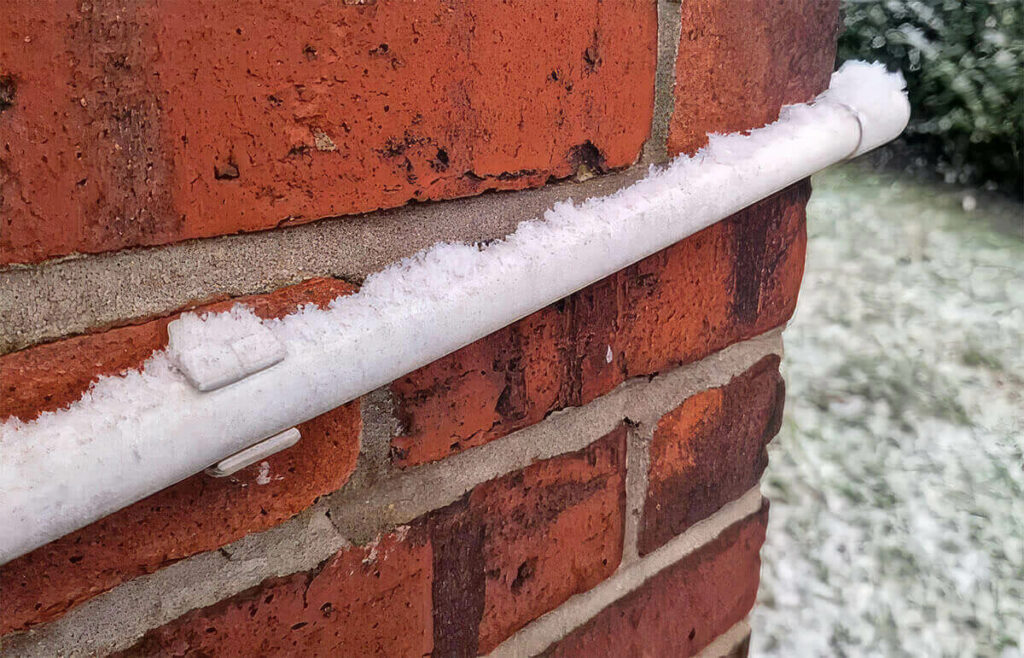
4. Furnace blows cold air then hot
Sometimes, furnaces can blow cold air as they start up before warmed air eventually starts blowing. You’ll need to do the following:
Get the fan limit switch checked
If there is no problem with the thermostat, the limit switch is one of the first places to look when troubleshooting a furnace that blows cold air and then hot air.
Remember, the limit switch turns the fan motor on and off during the normal heating cycle, preventing the furnace from overheating.
A faulty fan limit switch may send the wrong instructions to the fan motor, turning it on too soon and circulating cold air around your home before the heat exchanger has fully heated the air. The air will feel cold initially until the heat exchanger has fully done its job.
The limit switch may need to be replaced, which is a job for a professional HVAC technician.
Furnace repair and maintenance in Calgary
If your furnace is blowing cold air, some simple problems like dirty filters or an incorrectly set thermostat may be fixed by a proactive homeowner. However, other cold air problems can be triggered by inbuilt safety mechanisms of the furnace or faulty components that are dangerous to fix by anyone but a professional HVAC technician.
Don’t wait until winter starts to address furnace issues. If you’re in Calgary and your furnace is blowing cold air, call Alberta Mountain Air at 403-236-4366 or contact us online to schedule repairs or book maintenance.
